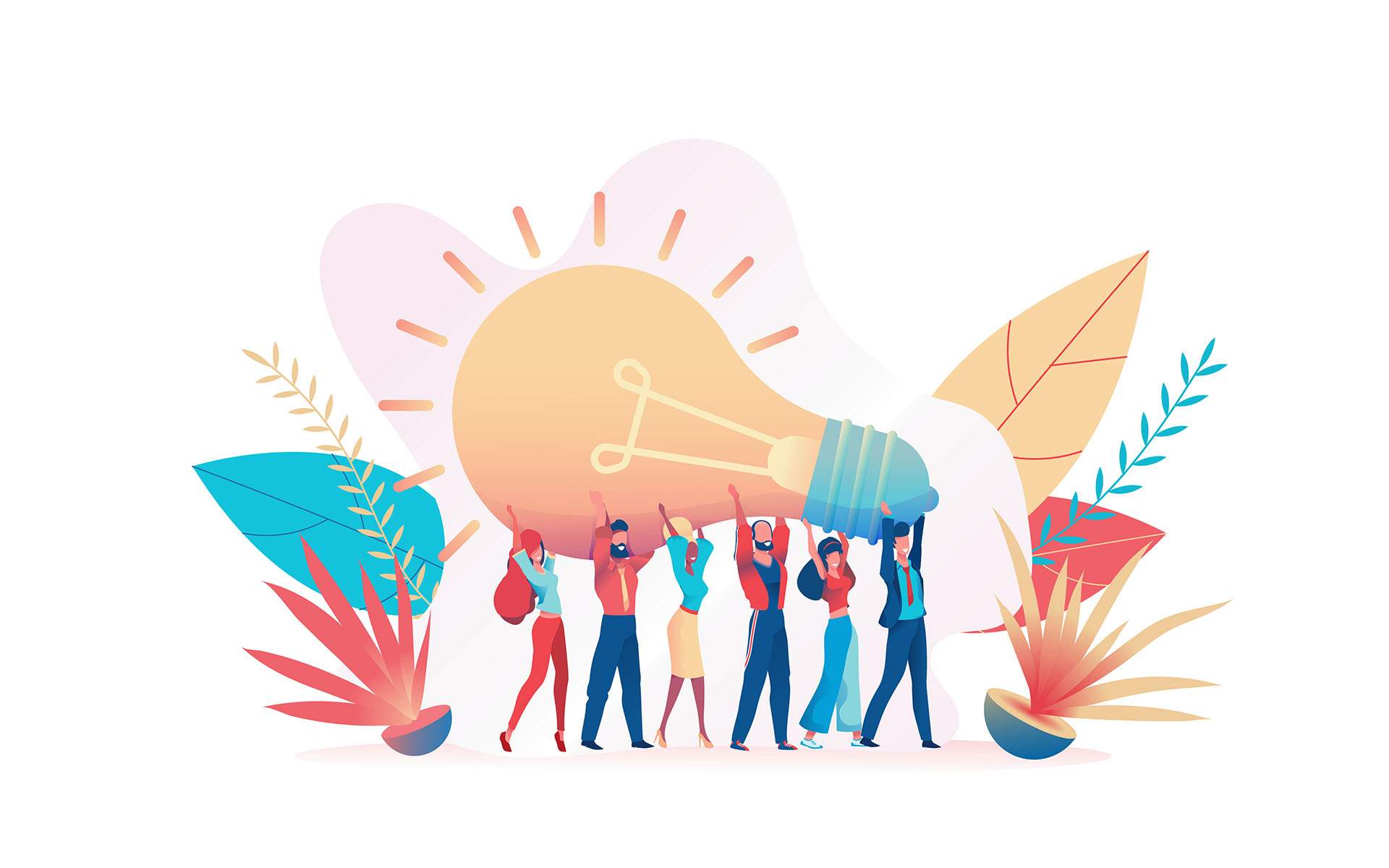Under the pressures modern companies face to be productive and efficient, the importance of nurturing creativity can get lost in the mix. In this conversation, Mindful Communications CEO Bryan Welch and Andrew Swinand, CEO of Publicis Creative, Leo Burnett Group, and a founder of Abundant Venture Partners, discuss the many ways mindfulness practice benefits leadership and organizations.
This conversation is the first in Mindful’s new Leading Mindfully webinar series. Watch a recording of the conversation below. This Q&A shares highlights from the conversation, including Andrew’s experience with meditation and bringing mindfulness into the workplace.
Bryan: What was your experience when you first started meditating?
Andrew: The biggest “aha” was the practice of presencing. We are constantly in this triggered state and thinking about the hundred things we need to do. And for me the idea of practicing presencing and being in the moment, coupled with meditation and practicing breath control and calming your mind, had a transformational impact.
Meditation practice helps with presencing and stress control. The ongoing benefit is being able to identify when you’re in a triggered state and being able to step back and ask, “Where am I now? Is there any real threat here? And what am I really focused on?” For me, mindfulness is part of a holistic commitment to movement, mindfulness and meditation. And I see the three being balanced in terms of my own practice.
Bryan: You meditate every day, usually?
Andrew: I do. Generally when I wake up in the morning, first thing, I do 15 minutes to a half hour, and right before bed, 15 minutes to a half hour. And then the rest of my practice is what I think of as “snackable moments”.
Unleashing Creativity at Work
Bryan: Traditionally, the workplace—and particularly the executive suite—is a bastion of intensity, certainty, and often aggression. And a mindfulness practice, a meditation practice, is usually perceived to cultivate the opposite sort of qualities in people. Tell me about being a meditator and leading thousands of people, and, one assumes, encountering the usual situations in business that can include antagonisms, confrontation, negotiation. How does mindfulness inform your work as an executive leading a great big company?
Andrew: Our core product is creativity. People come to us with problems and say, “Can you use creativity to help me solve them?” So we train and encourage mindfulness across all of our employees.
I feel like mindfulness is a secret unlock for innovation and creativity because it allows you to be in the moment and focus on the problem.
There is a study where, basically, they found that people have, on average, about 70,000 thoughts a day. About 80% of them are the same thoughts you had the day before because you’re in this triggered state of, “If only I had made that free throw in eighth grade my whole life would’ve been different.” But if our whole thing is coming up with new ideas for clients, and if 80% of our thoughts are the same ones we had the day before, we’re probably not that good at our jobs.
As a leader, if I show up stressed and angry, I’m probably limiting the team’s ability to innovate. From a leadership perspective, it’s almost mandatory to have some sort of practice to maintain energy.
I feel like mindfulness is a secret unlock for innovation and creativity because it allows you to be in the moment and focus on the problem. Secondarily, I think about leadership, not so much from a standpoint of aggression or a confrontation, but of positive energy and wind in the sails. If I think about my core job, it’s, “How do I energize and focus the people who work for me?” The medium I have to do that is the energy I bring to the problem and the situation.
As a leader, if I show up stressed and angry, I’m probably limiting the team’s ability to innovate. From a leadership perspective, it’s almost mandatory to have some sort of practice to maintain energy.
Bryan: Are there resources to cultivate mindfulness practices in your colleagues across your organization?
Andrew: There’s an education component. We take a lot of the content from mindful.org and deploy it, and we are working to get Mindful content and specific practices posted on our internal app. We also require all of our leaders to go through a program in conscious leadership.
The idea is, whether the issue is trouble sleeping, stress or anxiety, that people can both educate themselves on techniques to deal with it, and also learn practices to help with presencing. And then lastly, we’ve worked extensively with Life Cross Training in terms of coaching senior executives in the practices of movement, mindfulness and meditation, and stress management.
The efficiency and the efficacy of having leaders who can show up and be present has been an incredibly valuable and creative investment, because it allows you to be a more effective, functional leadership team.
Feedback Is a Gift
Bryan: As a person who supports mindfulness practices for his colleagues in the workplace, you mention enhanced creativity as a benefit. Are there other specific qualities that you think are valuable in the workplace that rest on a foundation of mindfulness?
Andrew: Absolutely. The whole platform across the creative agencies is to focus on creativity and kindness. I think mindfulness is central. If people are walking around in a triggered state, it’s very hard to be open to new ideas, to approach things from a place of curiosity, and productively deal with conflict.
I think mindfulness is central. If people are walking around in a triggered state, it’s very hard to be open to new ideas, to approach things from a place of curiosity, and productively deal with conflict.
If you think about the very definition of creative concepting, it’s presenting new ideas, debating them, and vetting them. If you’re defensive, if you’re not open to feedback, if you’re not open to evolution, you’re not going to get to a good place. But in the same respect, if you don’t feel like it’s a safe environment, if you don’t feel like it’s a kind environment, you’re not going to share your ideas and take the lead.
For me, the idea of creativity and kindness are inextricably linked. And you need to cultivate an environment where people have the head space to come up with new ideas, but also the safe space to share them, and the acceptance that others are going to input on those ideas, sometimes critically, to build them.
Coming back to some of the conscious leadership principles, it’s approaching the world from a place of curiosity and the idea of feedback as a gift. The paradigm shift is going from, “Someone’s giving me feedback and therefore I have to prove them wrong because I need to be right,” to, “OK, Bryan loves and cares about me enough that he’s willing to risk our relationship to share his input. He’s willing to devote his time to consider it, and he trusts that I’m going to be mature and open enough to hear him, so he’s going to share that feedback.” And that’s a gift, because if Bryan really didn’t give a damn, he would say nothing because he no longer cares about the relationship, the idea or better outcomes.
So if your colleague is willing to invest that trust in you, how do you return the gift? Basically, by being open to it and approaching it from a place of curiosity and “What can I learn?”
Creating Space to Go With the Flow
Bryan: How has your mindfulness practice helped you navigate the world of change, uncertainty, complexity and ambiguity?
Andrew: Coming back to the point of curiosity, it creates an openness, a space for you to accept change and be open to different outcomes. For me, being mindful removes you from a defensive state and allows you to be open to say, “OK, let me see where this leads and let me see what the possibilities are.”
Bryan: Are there mindfulness practices you’ve integrated into the routines of your company? For instance, in meetings, do you ever have a mindful moment or is there any of that kind of standard ritual in your organization?
Andrew: At Abundant Ventures, we start every meeting with a mindful moment and moment of pause, and the idea is to allow people to show up, so it’s take a minute, take a breath. If there’s that one email you want to get out, get it done, then take a minute to allow yourself to show up. More broadly, at the leadership level, the biggest thing I do is gratitude—during meetings, allowing time for people to share thanks and gratitude. I see it as part of the practice, encouraging people to look for and share appreciation.
Bryan: Do you have any suggestions for people who have a mindfulness practice and would like to introduce it to their workplace?
Andrew: As a leader, my point of view is that it’s a personal responsibility to bring mindfulness to the organization. Why would you not put that gift on the table if you have the ability to give it?
READ MORE
Using Mindfulness to Jumpstart Creativity at Work
Research suggests people are more open to original ideas after just a brief meditation practice.
Read More
Turning Toward Collaborative Leadership
How a deep mindfulness practice helped Jessica Morey loosen the reins at Inward Bound Mindfulness Education, and empower the organization to adopt a new way to work.
Read More
Why We Need New Ways of Thinking
The same old ways of thinking get the same old result. Barry Boyce profiles a few visionary professionals who are carving out a new way of seeing and working in the world.
Read More











